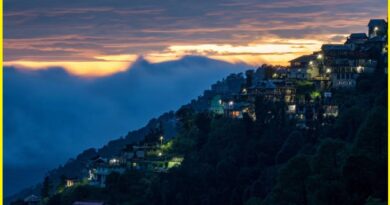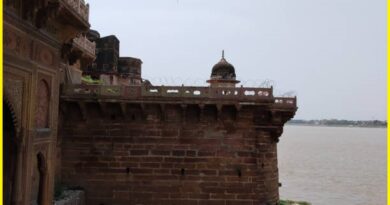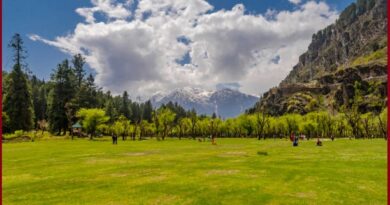Tsingy de Bemaraha National Park and Karst pinnacles in Madagascar
Tsingy De Bemaraha
Tsingy de Bemaraha is a national park located in the Melaky region of western Madagascar. It was designated as a UNESCO World Heritage site in 1990 due to its unique geological formations and rich biodiversity. The park’s name, “tsingy,” means “walking on tiptoes” in Malagasy, Tsingy is sharp, needle-like limestone formations that cover much of the park’s surface. These formations were created over millions of years by the erosion of the limestone plateau and have created a unique landscape that is both beautiful and challenging to navigate. The stunning geological site Tsingy de Bemaraha is also home to a wide variety of plant and animal species. The park is home to more than a dozen lemur species, including the critically endangered Decken’s sifaka and the red-fronted brown lemur. Visitors to Tsingy de Bemaraha can take guided hikes through the park to explore its unique landscape and observe its wildlife.
Tsingy De Bemaraha geology
The geology of Tsingy De Bemaraha is primarily composed of limestone, a sedimentary rock formed from the accumulation of marine organic debris, such as shells and coral, over millions of years. The rocks in the area were originally deposited under a shallow sea that covered the region during the Jurassic period, over 150 million years ago.
Over time, tectonic uplift and erosion caused the limestone to be exposed and shaped into the unique karst formations (Structure forms in Carbonate rock terrain due to Water activity). The process of weathering and erosion, such as rainfall and wind, has created a complex network of sharp limestone pinnacles, ridges, and gorges that have been sculpted into fascinating shapes, providing a unique and awe-inspiring landscape.

The sharp karst formations, known as “tsingy,” can be up to 30 meters high and are made up of jagged limestone spires with razor-sharp edges. The limestone formations are also home to several caves, underground rivers, and sinkholes, providing a unique underground landscape to explore. Due to its unique geological features and diverse ecosystem, Tsingy De Bemaraha has been designated as a UNESCO World Heritage site, helping to preserve this important natural and cultural heritage site for future generations.
Tsingy De Bemaraha’s formation has become increasingly popular in recent years, with visitors coming from around the world to experience its unique and beautiful landscape. However, it is also important to ensure that tourism activities are sustainable and do not damage the fragile ecosystem of the formation.
Also, read- Seven-Colored Earth-A Dramatic rock Exposures in Mauritius
Tsingy De Bemaraha National Park Madagascar
Tsingy De Bemaraha National Park is a protected area that covers an area of over 1,500 square kilometers and was established in 1998 to preserve its unique geology and biodiversity. The park is named after its unique limestone formations, known as “tsingy,” which cover a large portion of its surface.
The park is also home to a diverse range of plant and animal species, many of which are endemic to Madagascar. The forested areas of the park provide habitat for several species of lemurs, including Decken’s sifaka, the red-fronted brown lemur, and Madame Berthe’s mouse lemur, which is the smallest primate in the world. The park is also home to several species of reptiles, including geckos, chameleons, and snakes.

Tsingy De Bemaraha Strict Nature Reserve
The Tsingy De Bemaraha Nature Reserve is managed by Madagascar’s national park authority, which oversees a variety of conservation and research initiatives in the area. Access to the reserve is restricted, and visitors are only allowed to enter with an authorized guide. This is to ensure that the area is protected from overuse and damage caused by human activities.
Visitors to Tsingy De Bemaraha Strict Nature Reserve can explore the park’s unique landscape and observe its wildlife through guided hikes and other activities. Due to the challenging terrain and fragile nature of the area, visitors are required to wear safety harnesses and helmets to traverse the limestone formations. The reserve also has several campsites and lodges available for visitors who wish to stay longer and explore more of the area.
Tsingy De Bemaraha tour
A visit to Tsingy De Bemaraha is an unforgettable experience for those interested in unique natural formations and wildlife. The park offers several tour options for visitors to explore its unique landscape and biodiversity. Here are some of the popular tour options:
- Tsingy Trekking: This tour offers visitors the chance to hike through the park’s karst landscape and explore the narrow canyons, vertical spires, and lush vegetation. The trek is led by experienced guides who are knowledgeable about the park’s geology and biodiversity. The trek can take a half-day or a full day, depending on the route and your fitness level.
- Canoeing in the Manambolo River: This tour takes visitors on a canoe ride through the Manambolo River, which runs through the park. The river offers stunning views of the park’s karst landscape and provides the opportunity to see some of the park’s wildlife, such as crocodiles and birds.
- Night Walks: This tour offers visitors the chance to explore the park at night and see some of the park’s nocturnal animals, such as the aye-aye and several species of lemurs. The tour is led by experienced guides with a keen eye for spotting animals in the dark
- Caving: This tour offers visitors the chance to explore some of the park’s underground caves and tunnels, which are home to a variety of unique species, such as bats and blind fish.
- Bird Watching: Tsingy De Bemaraha is home to over 100 species of birds, making it a popular destination for bird watchers. The tour offers the opportunity to see several endemic and rare bird species, such as the Madagascar fish eagle, the crested ibis, and the Madagascar harrier hawk.

How to Reach Tsingy De Bemaraha
Reaching Tsingy De Bemaraha can be a bit challenging, as it is located in a remote part of Madagascar. The nearest airport to Tsingy De Bemaraha is the town of Morondava, which is about 220 km away. Several airlines, including Air Madagascar, offer regular flights to Morondava from Antananarivo, the capital of Madagascar. From Morondava, visitors can hire a taxi or take a public bus to reach the park.
Visitors can also reach the park by road. The road journey can take up to two days, and it is recommended to hire a 4×4 vehicle and an experienced driver for the journey. Visitors can also reach the park by taking a boat tour on the Tsiribihina River, which flows through the park. Several tour operators offer multi-day boat tours from the town of Antsirabe to the park, which is a unique way to explore the remote landscape and wildlife along the river.




Pingback: Fish River Canyon Namibia-The 2nd Largest Canyon in the World - Geotourism